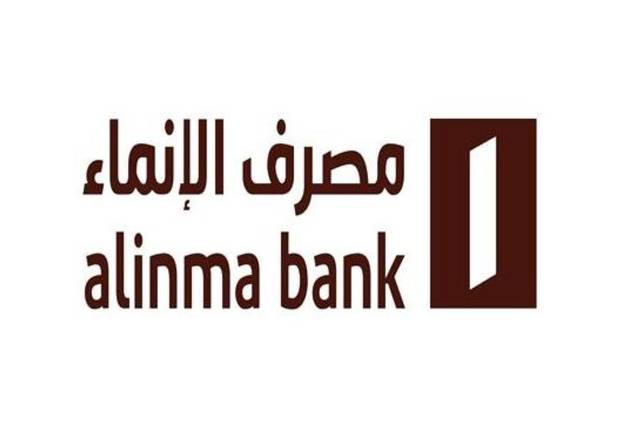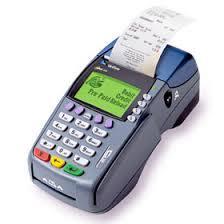

Also, the resultant linear scar on the cheek from such a wound. 24 years old Early Childhood (Pre-Primary School) Teacher Charlie from Cold Lake, has several hobbies and interests including music-keyboard, forex, investment, bitcoin, cryptocurrency and butterfly watching. Is quite excited in particular about touring Durham Castle and Cathedral.
For instance, there is one documented trade where six high quality beaver skins or twelve high quality rabbit pelts each equaled one buck. It is thought that the highest quality skins were generally assigned a one to one value with one skin equaling one buck. In contrast, for lower quality skins, it might take several of them to be valued at a single buck. The specific value for given sets of skins was then set at trading. From poker, where the token in front of the dealer was called a buck whose handle was made of buck horn and it is related to the phrase pass the buck.

How much is Buckingham Palace…Does cod fish have fins…Is oil only sold in…Are JFK half dollars worth…Should you tip in pesos… A fifty-dollar note is also known colloquially as a “pineapple” or the “Big Pineapple” because of its yellow colour. Montana had a proposed design with a male elk minted, but elk are not called “bucks”. See also here and here to see submitted elk designs for Montana.
buck 50
However, this usually only extends to terms that are not specific to one country or the other. Similar to the United States 5 cent coins are called nickle , 10 cent coins are dimes, 25 cent coins are quarters or two bits. fifty bucks meaning A number of post-decimal denominations which have since been discontinued had their own nicknames. The two-dollar note was known as the “sick sheep” in reference to its green colour and the merino ram that it showed.
- Technically, it’s not correct to call any form of currency exchange as “buck”.
- These example sentences are selected automatically from various online news sources to reflect current usage of the word ‘buck.’ Views expressed in the examples do not represent the opinion of Merriam-Webster or its editors.
- “Bucks,” which has become synonymous with “dollars” in modern vernacular, is one example of the latter.
- Normally a “buck” is $1, and a “buck fifty” is $1.50.
- So it makes sense that the movie gives a sense of “nothing wrong” about what she does.
It doesn’t catch the usages in 1748 or 1856 noted by the OP, but it’s a start. “Greenback” originally applied specifically to the 19th century Demand Note dollars created by Abraham Lincoln to finance the costs of the American Civil War for the North. The original note was printed in black and green on the back side. $1 bill is sometimes called a “single”, a “buck”, a “simoleon” or rarely an “ace”. The dollar has also been referred to as a “bean” or “bone” (e.g. twenty bones is equal to $20). £1,000 is commonly referred to as a grand, e.g., £4,000 would be called 4 grand, or rarely in certain dialects as a “bag” (from the rhyming slang “Bag of Sand”), e.g., £4,000 would be called 4 bags.
Breaking the Buck
E.g. “He made three quid last 12 months” would mean “He earned three million kilos”. “They manage a hundred bucks” signifies that they have property of 100 million US dollars. Similar to ” shrapnel” using “washers” in Scotland denotes a amount of low worth coinage.
We’re throwing a party tonight for a tiny fee of ten bucks a head. I found a $100 bill in his vest pocket and 30 – some bucks in his pants. But if you were a guy with 20 bucks in your pocket and you showed up at the door, or a pretty girl, you got in. The original $1,000 bill featured Alexander Hamilton on the front. Tried to pass the buck for the failure to his boss.
South African slang for various amounts of money borrows many terms from the rest of the English speaking world, such as the word “grand” when referring to R1,000. Other words are unique to South Africa, such as the term “choc” when referring to a R20 note. Decimal currency was introduced in 1961, when the South African pound, previously based on the United Kingdom currency, was replaced by the rand at the rate of 2 rand to 1 pound, or 10 shillings to the rand. Thus the United Kingdom term “bob” for a shilling equates to 10 cents. In olden days, RM 10 was called “Red Tiger” because there was a watermark of tiger in a red tone on the RM 10 notes. A one hundred-dollar note is known colloquially as a C-Note, a Borden , or a bill (e.g. $500 is 5 bills).
The currencies of Romania and Bulgaria are, to this day, ‘lion’ (leu/lev). The trendy American-English pronunciation of greenback remains to be remarkably near the 17th century Dutch pronunciation of daler. Deer have lengthy been bred in captivity as ornaments for parks, however solely in the case of reindeer has thorough domestication succeeded. The Sami of Scandinavia and the Kola Peninsula of Russia and different nomadic peoples of northern Asia use reindeer for food, clothing, and transport.
From 1993 to 2008, Slovakia used its own currency, slovenská koruna , instead of Euro. During this period, slang words for greater amounts of money were established, including “kilo” for one hundred crowns, “liter” for one thousand crowns and “melón” for one million crowns. These slang words are still used after 2008, albeit less frequently. Senior people above 65 now (previous to baby-boomer generation) used to call “guita” to the coins of low denomination of cents (‘centavos’), like 2, 5 or 10 cent coins. The word “guita” in lunfardo is synonym for “money”. A billionaire is an individual who has assets or a net worth of at least one billion currency units such as dollars, euros, or pounds.
Your Answer
The banknote was called a “Grant”, which overtime became ‘grand’. The $5 note features subtle background colors of light purple and gray, and includes an embedded security thread that glows blue when illuminated by UV light. Two watermarks are featured in the $5 note, and they are visible from both sides of the note when held to light.
How many dollars is 10 bucks?
@Richard – As much as I like your answer, the question is why she asked the date for $50 for the toilet. I’m sure she was fleecing the date by keeping the money, but the reason for getting money for the toilet was due to a tip being expected. Normally a “buck” is $1, and a “buck fifty” is $1.50. GBP is the abbreviation for the British pound sterling, the official currency of the United Kingdom and its territories. A sawbuck resembles the Roman numeral X and is slang for the $10 bill. Interbank forex dealers use the term to signify a transaction of $10 million.
The cat is a domestic species of small carnivorous mammal. It is the one domesticated species in the household Felidae and is sometimes called the domestic cat to tell apart it from the wild members of the family. The latter resembled modern-day bovids and cervids in dental morphology , while the previous was extra advanced.
Stack Exchange network consists of 181 Q&A communities including Stack Overflow, the largest, most trusted online community for developers to learn, share their knowledge, and build their careers. Silver dollars reaching China had been often stamped with Chinese characters known as “chop marks”, which indicated that that exact coin had been assayed by a widely known merchant and deemed genuine. Buck is a slang word for dollar, so “a buck fifty” means $1.50. The Hudson’s Bay Company shield consists of four beavers separated by a red St. George’s Cross and reflects the importance of this industrious rodent to the company.
Slang terms for the Swedish krona in use today include spänn and bagis. Riksdaler is still used as a colloquial term for the krona in Sweden. A 20-kronor banknote is sometimes called selma, referring to the portrait of Selma Lagerlöf on the older version of the note. The earliest written use of the word “buck” is from 1748. Conrad Weiser, a Pennsylvania Dutch pioneer who had frequent contact between colonists and Native Americans, wrote in his journal that someone was robbed of 300 bucks’ worth of items. He further clarified that five bucks were worth a cask of whiskey at the time.
This question on EL&U demonstrates that responses involving “I’ve never heard that usage before” may mean this could be a regional usage, but not a non-existent one. But for most of my life I’ve been aware that “buck” can be used broadly in the sense of 100 of something, especially when that something involves weight and money. Brewer, 1978, p.1029, “If now a person is offered anything on sale, he might say, I have not a quid for your quo, an equivalent in cash.” “honey bun” derived from the term “honey bun harden” is mainly used when referring to a hundred thousand. A “hoka” is used to express a large sum of money, usually between ten thousand and fifty thousand dollars. £10 is commonly known as a “tenner” or, more uncommonly, a “Darwin”, due to the image of Charles Darwin on the back .
@geneSummons that doesn’t sound like quite the same usage, since it’s still referring to money. It’s very common, for example, for American English speakers to say a car “costs about thirty” and it be understood that “thirty” means “thirty thousand.” I think that the most interesting chart, and the one that shows the best usage over time as well as possible starting date, is for “about a buck fifty”. Without any rigorous analysis, it looks like the date we’re looking for is sometime in the 1970s. Not an answer, but possibly related — Nixon’s national 55 mph speed limit of the 70s-80s was at least sometimes referred to as “the double nickel”… “How much is a pony and a monkey? Cockney rhyming slang for money explained”.


